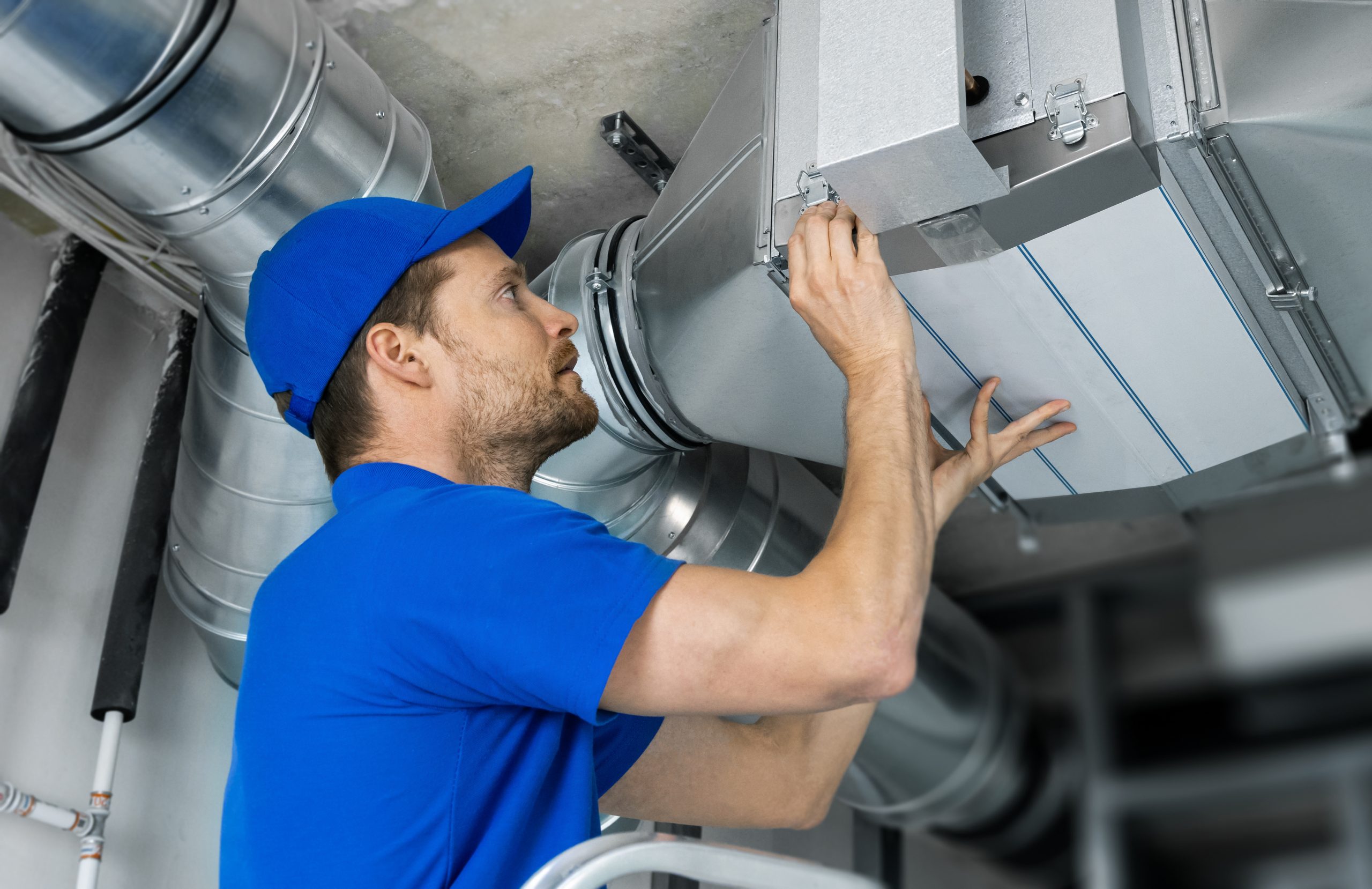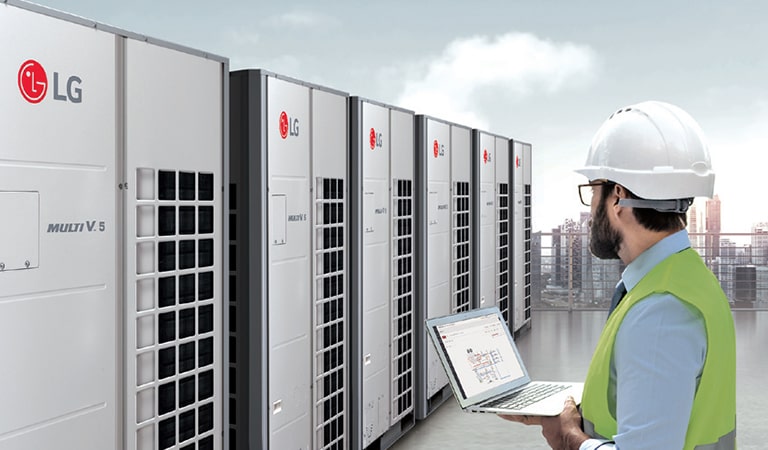Essential Insights About ductless mini splits Before You Upgrade
Essential Insights About ductless mini splits Before You Upgrade
Blog Article
Just How a Heatpump and Furnace Interact to Optimize Your Home's Home heating Efficiency
Recognizing exactly how a heat pump and heating system collaborate is vital for property owners looking for efficient home heating options. Each system has its strengths, giving a well balanced method to home comfort. The heatpump excels in moderate temperatures, while the heater provides fast heat during severe cold. This synergy not just reduces energy prices however additionally enhances the life expectancy of both appliances. What aspects affect this collaboration, and just how can property owners optimize their advantages?
Understanding Warm Pumps: Just How They Work
Although lots of people may be strange with their internal workings, heatpump play an essential function in modern-day heater. These devices operate by transferring warm from one area to an additional, utilizing the principles of thermodynamics. In chillier months, a heatpump removes warmth from the outside air, ground, or water, and transfers it indoors to warm up the home. On the other hand, throughout warmer months, it can turn around the procedure, serving as an air conditioning system by removing heat from inside to the outside.Heat pumps consist of an evaporator, compressor, condenser, and development shutoff. The cooling agent within the system absorbs warmth as it vaporizes at reduced temperature levels and stress. The compressor after that boosts the stress and temperature level of the cooling agent, enabling it to release heat as it condenses. This efficient process can greatly reduce energy intake contrasted to typical home heating techniques, making warm pumps a sustainable choice for climate control in homes.
The Duty of Heaters in Home Home Heating
Heating systems play a necessary function in home heating by supplying a trustworthy resource of warmth during the colder months. They run by creating warmth with combustion or electrical resistance, dispersing it throughout the home by means of ducts or glowing systems. The performance of a heating system is commonly determined by its Yearly Fuel Usage Efficiency (AFUE) ranking, which suggests how efficiently the unit converts gas into heat.Furnaces can use various power sources, consisting of natural gas, oil, power, or lp, allowing home owners to choose one of the most suitable alternative for their needs. Unlike warmth pumps, which may battle in extreme cool, furnaces keep consistent efficiency, guaranteeing that indoor temperature levels continue to be comfortable no matter of outdoor conditions. In addition, modern heaters typically come geared up with sophisticated technology, such as variable-speed blowers and wise thermostats, enhancing their performance and responsiveness. This flexibility makes heating systems an essential element in all-encompassing home heating methods.

Advantages of Making Use Of Both Solutions Together
Incorporating the toughness of both heaters and warmth pumps can bring about an extra efficient and efficient home heating service. Utilizing both systems allows homeowners to capitalize on the heatpump's power effectiveness during milder temperature levels while relying on the furnace for even more extreme cold problems. This dual strategy can considerably decrease power costs, as warmth pumps take in much less electrical energy than conventional home heating approaches when temperatures are moderate.Additionally, making use of both systems together can boost comfort degrees in the home. Heatpump can give constant, even home heating, while furnaces can swiftly raise ambient temperature levels when needed. Moreover, the integration of both systems can expand the life expectancy of equipment by minimizing deterioration on each device, as they share the workload. Inevitably, house owners can appreciate a balanced, economical heating option that changes seamlessly to differing climate condition, ensuring a cozy and welcoming home throughout the cold weather.
Exactly How Heat Pumps and Furnaces Complement Each Other
When home owners integrate heat pumps and heating systems, they develop a corresponding heater that optimizes performance and convenience. Heatpump operate by transferring heat from the outside air or ground, making them highly efficient in moderate climates. They excel throughout milder temperature levels, giving cost-effective home heating. Conversely, furnaces generate warmth via burning or electrical resistance, supplying solid, instant heat during extreme cool conditions.The mix of these two systems enables vibrant modifications based upon temperature level variations. Throughout warmer months or milder winter season days, the warmth pump can take the lead, preserving energy and lowering prices. As temperatures decrease, the heater can seamlessly involve, ensuring constant warmth throughout the home. This harmony not just maximizes energy usage yet additionally improves the lifespan of both systems, as each unit runs within its ideal efficiency variety. With each other, they produce a balanced setting that adjusts to differing climate demands.
Optimizing Efficiency: Tips for Homeowners
Home owners can boost their home heating performance with several sensible approaches. Establishing a routine upkeep schedule, incorporating clever thermostat modern technology, and executing effective insulation and securing services are key actions. These procedures not just enhance convenience yet likewise minimize energy expenses.
Routine Upkeep Arrange
To ensure optimal heating effectiveness, establishing a regular maintenance timetable is necessary for any kind of home. Home owners need to focus on routine evaluations of both warm pop over to this site pumps and heaters to identify peak performance. This consists of altering air filters each to three months, as blocked filters can substantially decrease effectiveness. In addition, organizing specialist upkeep at the very least when a year allows service technicians to identify and deal with prospective problems prior to they rise. Property owners must additionally clean the warm pump's outside device to avoid particles accumulation that can prevent air movement. By sticking to a routine upkeep routine, homeowners not just enhance their heater' performance yet additionally extend their lifespan, bring about higher convenience and decreased energy expenses throughout the chillier months.
Smart Thermostat Integration
Integrating a smart thermostat right into a home furnace can greatly boost power performance, especially as it permits specific control over temperature settings. These tools can discover the homeowner's timetable and choices, automatically readjusting the temperature level to optimize convenience while reducing energy usage. They can reduce heating throughout times when the home is unoccupied, lowering unnecessary intake. Numerous clever thermostats likewise provide real-time energy use data, making it possible for home owners to make educated choices about their home heating habits. Furthermore, remote access by means of smartphone apps permits customers to adjust setups from anywhere, ensuring the home is warm upon return. Generally, clever thermostat combination not just improves comfort however substantially contributes to energy financial savings and efficiency.
Insulation and Sealing Solutions
Smart thermostats play a crucial function in power performance, but their efficiency can be considerably boosted by appropriate insulation and securing remedies. Homeowners must focus on insulating attics, floorings, and wall surfaces to minimize heat loss. Top notch insulation materials, such as spray foam or fiberglass, can substantially enhance thermal resistance. In addition, securing gaps around air ducts, home windows, and doors protects against cool air seepage and warmth escape. Weatherstripping and caulking work methods for attending to these leakages - furnace replacement. Routine assessments for air leakages, in addition to making use of blower door tests, can assist determine problem areas. By purchasing insulation and securing, home owners can maximize the efficiency of their furnace, ultimately resulting in decreased energy consumption and reduced energy expenses
Typical Myths Regarding Heat Pumps and Furnaces
What misunderstandings surround heat pumps and furnaces? Many people erroneously think that heat pumps are ineffective in colder climates. In reality, contemporary heat pumps are created to operate efficiently also in reduced temperatures, providing dependable home heating throughout wintertime. One more usual myth is that furnaces are constantly a lot more effective than heat pumps. Nevertheless, this relies on the details power sources and effectiveness ratings of the devices concerned. Some might also think that utilizing both systems simultaneously is unneeded, however in truth, this mix can enhance home heating effectiveness, especially throughout extreme climate conditions. Furthermore, individuals usually assume that heatpump require continuous upkeep, when actually, they have similar maintenance requires to traditional heating unit. By unmasking these misconceptions, property owners can make even more enlightened decisions regarding their heating alternatives, ultimately causing boosted convenience and energy effectiveness in their homes.
Upkeep Factors To Consider for Combined Systems

Regularly Asked Questions
Can Warm Pumps Job Properly in Incredibly Cold Climates?
Heatpump can battle in extremely cold climates as a result of lowered efficiency and warm removal constraints. Advancements in technology have led to designs made for far better efficiency in such problems, improving their practicality in severe environments.
How Much Time Do Heat Pumps and Furnaces Commonly Last?
Heatpump commonly last 15 to two decades, while heaters have a life-span of 15 to 30 years. Normal upkeep can visit site expand their durability, making certain reliable operation and decreasing the need for premature substitutes.

What Is the Average Expense of Installing Both Equipments?
The average expense of mounting both a heatpump and a heater generally varies between $5,000 to $10,000 - heat pump replacement ooltewah tn. Elements affecting this price include system dimension, installment complexity, and local labor prices
Are There Tax Motivations for Using Energy-Efficient Heating Solutions?
Several property owners ask about tax rewards for energy-efficient heating unit. Various federal and state programs commonly offer credit scores or refunds, motivating the fostering of lasting modern technologies to lower energy intake and promote ecological obligation.
How Do I Select the Right Size Heat Pump and Heater?
Selecting the ideal size heatpump and furnace involves calculating the home's square footage, thinking about insulation high quality, and examining regional climate. Consulting an expert can ensure optimal system efficiency and energy effectiveness based on specific demands. heat pump replacement ooltewah tn. Recognizing exactly how a warm pump and furnace work with each other is essential for homeowners looking for reliable home heating services. In colder months, a heat pump removes warm from the outside air, ground, or water, and transfers it inside your home to warm the living room. When home owners integrate warm pumps and furnaces, they develop a complementary heating system that takes full advantage of efficiency and convenience. Warm pumps operate by moving warm from the outdoors air or ground, making look at this site them extremely effective in moderate environments. Warm pumps can struggle in exceptionally chilly climates due to minimized effectiveness and warmth extraction constraints
Report this page